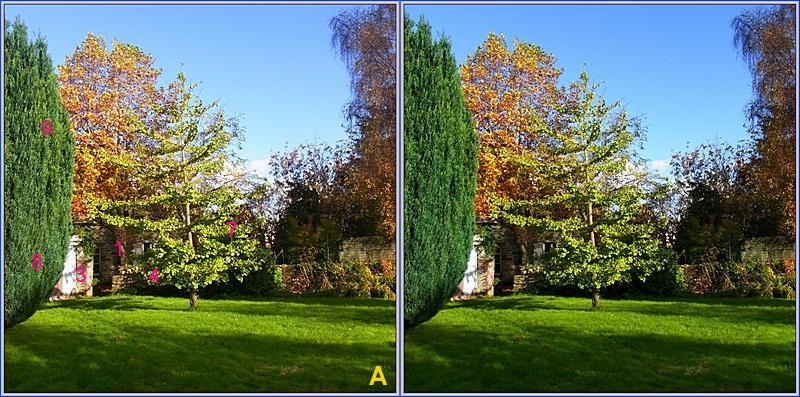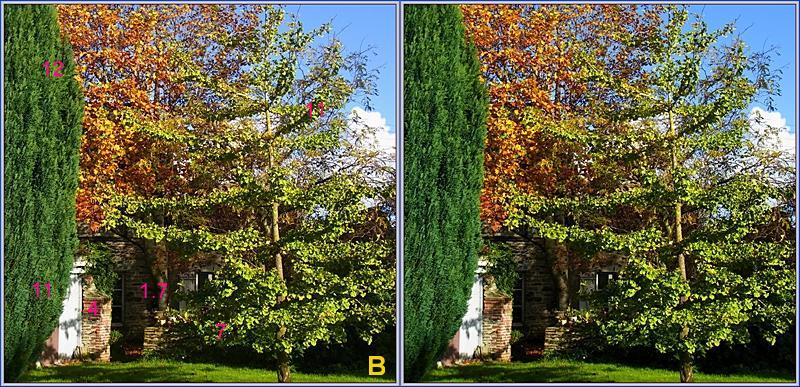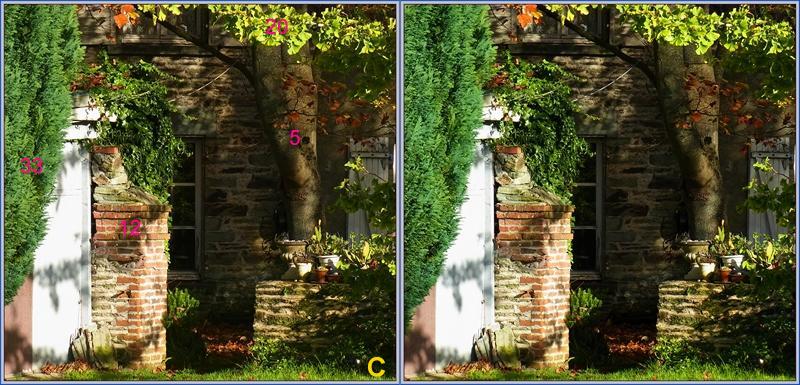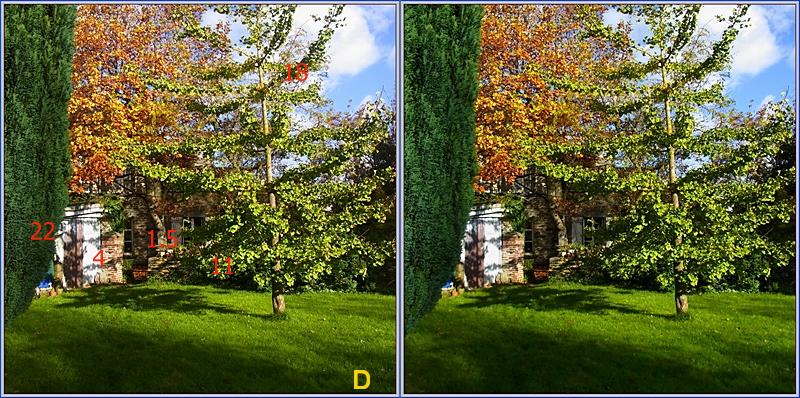- Range of the field angleThe formula shows that for a given base a narrower field angle increases the stereoscopic effect and a wider field angle lessens the stereoscopic effect.By the formula we compare the difference of projection of the subject on the background considering a field angle equivalent to our vision, in which M = 1.When using a tele lens the field angle is smaller which enlarge a part of the scene. Thus we can see smaller details kike if the keenness would be smaller. This is [a . M] and M < 1.When using a wide angle lens it's reverse. En utilisant un grand-angle, c'est l'inverse. We see a wider part of the scene making out less details; keenness is [a . M] avec M > 1.See the 3D pictures at the bottom of the page.

- Stereoscopic perceptionFrom what has been said about making out details, for the same base:D, the stereoscopic perception, or relief obviously:
- - lessens with wider field angle (smaller focal length)- increases with smaller field angle (greater focal length)
- Of course, once understood the magnitude process, the stereophotograph is free to choose either keep or not the effect and to force it further up or down. The main thing is to know the conventional limits and evaluate their transgression or not.
- Effect of lack of proportionWith a tele lens the apparent sizes of subjects are not varying much with the distance. A person very far appears just a little smaller than another one in the first plan.The impression is that these persons are close because their sizes are almost the same. The plans look flatWith a wide angle lens it's the opposite, the nearest person will appear much greater and the far person much smaller and will appear much further. The plans look stretched.
- On a 2D image, the lack of proportion, larger difference of sizes or not, are interpreted as bringing together or apart the plans of the scene, making the plans flat or stretched.In 3D pictures, these effects are partially vanished because the subjects and the plans already look separate from each other in the space. The true distances are better felt. The subjects themselves, like trees or group of people have depth.The effect of lack of proportion in 2D is counterweighted by the stereoscopic effect.
- Example by imageOn the pairs hereunder are shown the most significant stereoscopic ratios SR, calculated at each set of plans.On each pair the base is 65 mm close to the eyes and binocular cameras. Between these views, where only the focal length changes, the variation of relief is very clear.
- .Change from wide angle to tele lens makes out the relief more in the far than near. Enlarge the base modify in the same proportion the relief in all plans.It is easier to use simple numbers to quantify the relief than to have literary words for relief appreciation
Pairs crossed eyes

view A diagonal field angle 75°

view B diagonal field angle 47°

view C diagonal field angle 18°
|
|
|

view D diagonal field 75°
